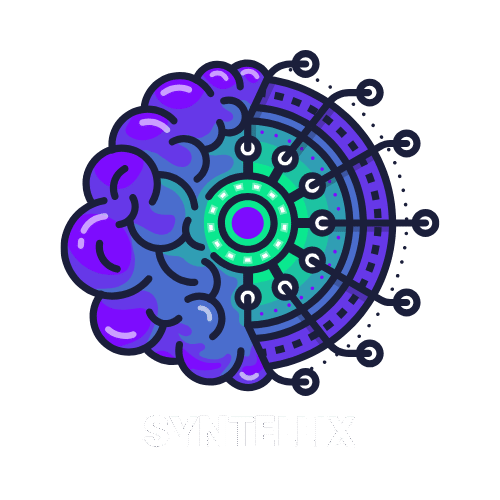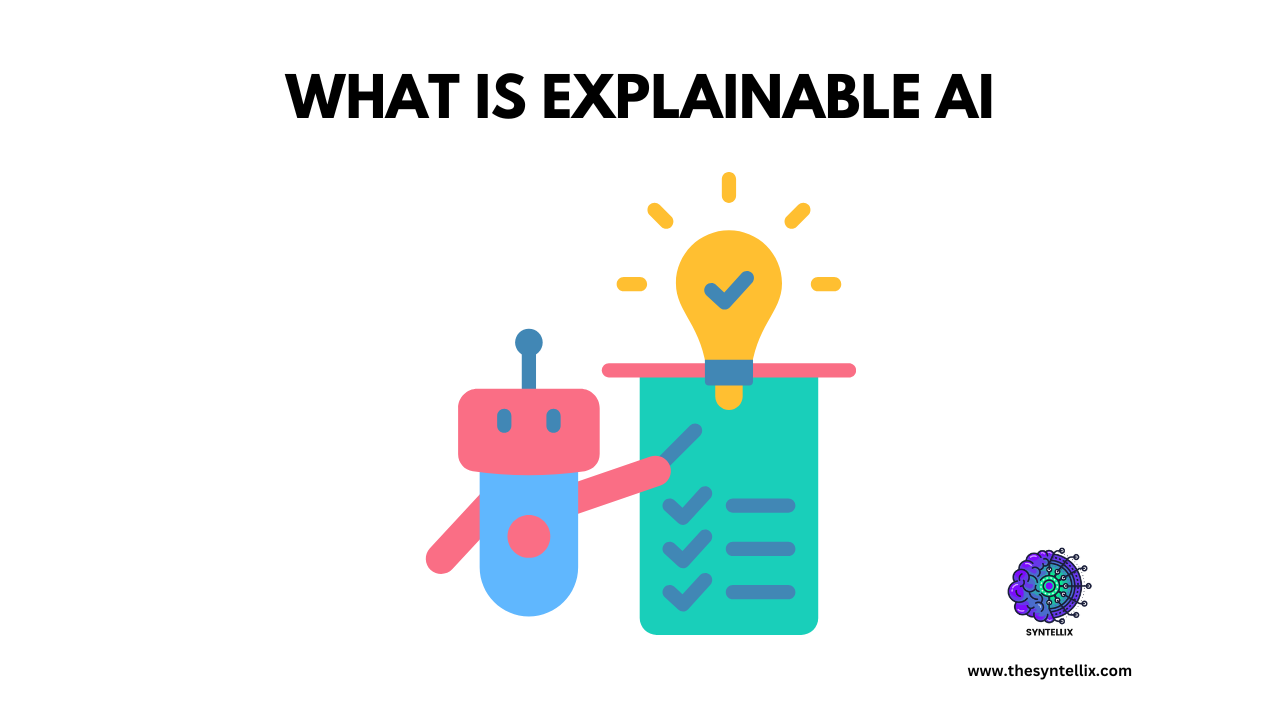Table of Contents
ToggleAlmost all the AI systems nowadays are powerful but they are not able to justify their decisions. They can make predictions, diagnose diseases, recommend financial decisions etc but they are unable to explain how and why they have done that. Explainable AI(XAI) is a growing field that is trying to solve this problem. This blogpost explores what Explainable AI (XAI) is, and how AI systems can gain human trust using Explainable AI(XAI). Lets dive in!
What is Explainable AI(XAI)?
Explainable AI (XAI) is a growing field that is trying to build user trust on AI systems. XAI is not just about transparency, it is about turning AI systems into well justified system that can think out loud, and should be able to explain what is the logic behind every decision that AI takes. In todays world where AI becomes more invisible XAI offers accountability.
XAI demands transparency just like people demand labeling on food items or safety standards on cars. With the help of Explainable AI(XAI) we can achieve the future where AI systems are not just accurate but they are understandable, relatable, and answerable. This concept is important because AI systems are directly impacting our lives in different sectors such as healthcare, criminal justice or hiring etc.
Without clear justification people may trust AI blindly or they may even reject it 100%. So, with XAI we can not just build smarter machine, we can build trustable machines that can fit into human values. So, explainability is not just about explaining the model but it is more about building an AI system that can earns the right to be believed.
How explainable AI works
Mostly people think that AI is a just ab black box, which means that the user will give an AI some input and it will give the output, but what happened in between is a mystery. Explainable AI(XAI) is about solving this mystery. Explainable AI is like a good teacher that does not just give you a right answer but also explains what makes the answer correct and also explains what will happen if the input is changed.
Explainable AI(XAI) works by using a second model that is a kind of translator that simplifies the decision making process into human understandable steps. For example, if a complex neural network reject someone’s loan application, the explainable layer will explain the reason behind the rejection.
The XAI will explain its decision as, I have rejected this application because the applicant has a low income source, his payment history is not acceptable or his loan size is too big for his income. Some AI systems use techniques like feature importance which means that it will highlights the data points by which it made the decision. Some XAI systems uses counterfactual explanations which means that what have changed the outcome, like “If your income were $5,000 higher, the loan would be approved”.
What makes the explanation good depends upon who is asking for explanation. A data scientist may ask for charts and confidence intervals. A customer or applicant may ask for plain language reasoning. So, XAI is not just about the logic of building explainable systems but it more about designing the communication between AI and humans. The best explainable systems does not just give you the math but it can communicate with you in your language(using NLP).
How to Build Explainable AI Systems with python
Step 1: Understanding the Flow
Before diving into the code lets explores what we are building. We will build a simple XAI model which predicts loan approval based on income, age, credit score, or other features. Then we will explain the system with SHAP. SHAP is a powerful tool that explain the AI decision.
We also define what counts as an “approved” loan. For simplicity:
- High credit score + high income = likely approved.
This simulates a real-world dataset where historical decisions guide future ones.
Step 2: Training the machine learning model
We are using popular and powerful AI model “Random Forest”. It learns from the data and make decisions. But it is unable to explain what it is doing. So, we are using SHAP library to explain the model decisions. SHAP(Shapley Additive explanations) is basically based on game theory that explain how much each input feature( like credit score or income) contributes to models final decision. It gives each feature a score positive or negative, based on its influence.
Step 3: Install necessary libraries
pip install pandas numpy scikit-learn shap matplotlibStep 4: Code
This is the easiest and simple script to make XAI system with built in explanations.
# Import libraries
import pandas as pd
import numpy as np
from sklearn.ensemble import RandomForestClassifier
from sklearn.model_selection import train_test_split
import shap
import matplotlib.pyplot as plt
# Step 1: Create synthetic data for loan predictions
# Each row is a person applying for a loan
data = {
'income': np.random.normal(50000, 15000, 500),
'loan_amount': np.random.normal(15000, 5000, 500),
'credit_score': np.random.normal(650, 50, 500),
'age': np.random.randint(21, 65, 500),
'employment_years': np.random.randint(0, 40, 500)
}
df = pd.DataFrame(data)
# Assume if credit_score > 670 and income > loan_amount, loan is approved
df['loan_approved'] = (
(df['credit_score'] > 670) &
(df['income'] > df['loan_amount'] * 2)
).astype(int)
# Step 2: Train/Test Split
X = df.drop('loan_approved', axis=1)
y = df['loan_approved']
X_train, X_test, y_train, y_test = train_test_split(X, y, test_size=0.2, random_state=42)
# Step 3: Train a Random Forest model
model = RandomForestClassifier(n_estimators=100, random_state=42)
model.fit(X_train, y_train)
# Step 4: Use SHAP to explain predictions
explainer = shap.TreeExplainer(model)
shap_values = explainer.shap_values(X_test)
# Step 5: Visualize explanation
# Summary plot shows which features matter most across the dataset
shap.summary_plot(shap_values[1], X_test)
# Step 6: Force plot for a single prediction
# Pick one person (row 0) and explain the decision
shap.initjs()
shap.force_plot(
explainer.expected_value[1],
shap_values[1][0],
X_test.iloc[0]
)
You just built a system that goes beyond your prediction. It helps humans to understand, trust, and improve AI models. These kinds of systems are essential for building AI that is not only powerful but also responsible.
Limitation of Explainable AI systems
XAI system promises to open the black box of AI systems so that human know how the decisions are made. It sounds the perfect solution to build trust, fairness, and accountability in AI but it is not easy as it seems. Some limitations that comes to build Explainable AI are as follows:
- The explanation can technically be correct but socially useless. For example, the AI might give the mathematical reason for a decision like credit score drop. But this explanation is not enough for common man to understand why he is not approved.
- Some AIs gives Performative Transparency which means that they are showing the charts or answers that gives illusion of clarity but not give the real reason behind the decision.
- AI give the reason why it did so, but the reason may not be fair or it may not satisfy the humans emotionally. Humans wants fairness, context or responsibility which AI can not truly provide.
- It is the human nature that if something went wrong than we ask for justification, But it is too late too prevent the issue.
- Even if the system is able to tell the reason behind, Still it can not fix it with their own.
Conclusion
Explainable AI, or XAI, helps us to understand how and why AI makes decisions. It is like opening a black box to see what is going on inside. When we make AI more clear and understandable, we do not just make it smarter, we make it more trustworthy and fair. Whether you build AI, make rules for it, or just use it in daily life, XAI helps make sure technology stays helpful to people, not the other way around.
Call to Action:
Demand transparency in every AI tool you use. Start by exploring Google’s XAI guidelines or joining the Open XAI Alliance.
People Also Ask
What is Explainable AI (XAI)?
XAI refers to AI systems that provide clear, human-understandable explanations for their decisions, ensuring transparency and trust.
Can XAI work with deep learning models?
Yes! Tools like SHAP and LIME interpret complex models, though interpretable-by-design systems (e.g., decision trees) are preferred for critical applications.
How does the EU enforce XAI compliance?
The EU AI Act requires companies to check and explain how their high-risk AI systems work. This includes regular audits, clear summaries (called model cards), and easy-to-understand explanations for users. If companies don’t follow these rules, they could face big fines.
Stay ahead of the curve with the latest insights, tips, and trends in AI, technology, and innovation.

